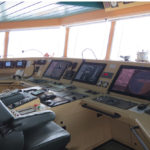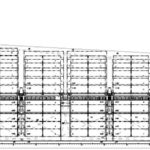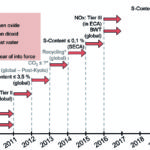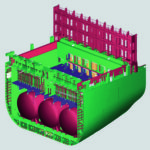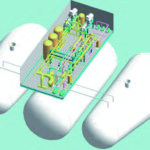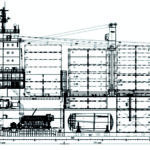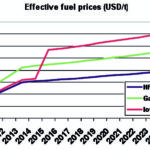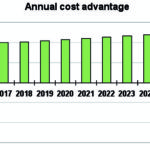Motivation and objective
Reduction of emissions is in the focus of the public awareness. Emission targets adopted by[ds_preview] IMO’s Marine Environment Protection Committee (MEPC) and introduced into the MARPOL-Code (Annex VI) will affect the maritime industry basically in the next 10 years. Numerous limitations, which will come into force stepwise, have been developed and will reduce the emissions of Nitrogen- and Sulphur Oxides, unburnt hydrocarbons, particulate matter as well as greenhouse gases.
Local areas like Sulphur Emission Control Areas (SECA, North Sea and Baltic) or Emission Control Areas (ECA) have stricter requirements regarding emission targets that globally required from MARPOL, cp. Fig. 1. A new ECA will come into force in August 2011 at the coastlines around Canada and the US. Additional ECA’s are expected at other coastlines of the world.
From 2015 the maximum sulphur content of fuel oil is limited to only 0.1 % S for all vessels operating in SECAs/ECAs. From 2016 NOx emissions for new buildings operating in ECAs are limited to so called Tier III. To fulfil this NOx limit, diesel engines burning marine fuel oils require exhaust gas aftertreatment measures which means additional investment and operational cost.
One possible approach to meet these emission requirements is to use natural gas as fuel for propulsion and electric power generation onboard. The usage of gas as fuel is associated with environmental benefits compared to any oil based fuel. LNG as fuel has the potential to reduce the CO2 emissions by around 25 % to 30 % depending on the gas composition. SOx and particulate emissions can be reduced to almost zero, NOx-emissions are reduced by more than 80 %. [1]
LNG supply chain
Current developments in Northern Europe indicates that LNG as fuel will be available for bunkering within the next years due to new liquefaction plants like NORDIC LNG Plant, located in Stavanger / Norway. These developments will establish the basis for a LNG supply chain for dedicated markets. Further a re-export from existing large-scale LNG terminals is a feasible option to feed the supply chain for LNG fuel gas as shown by the loading of »Coral Methane« at Zeebrugge in Mai 2010.
Small scale LNG carrier (~10000 m3, build for regional supply) will then be the link between these liquefaction plants or re-export terminals and bunkering in harbours. A number of small LNG carriers like Norgas Innovation, Coral Methane and Pioneer Knudsen are already in service and further new buildings are under construction.
Regulatory framework
According to the IGC-Code (International Code for the Construction and Equipment of Ships Carrying Liquefied Gases in Bulk) only LNG carrier are allowed to utilize LNG boil-off gas in the machinery space as fuel. Since 2000 a few LNG fuelled vessels, which are not covered by the IGC-Code, have come into service with the permission of the national administration, means these vessels are only allowed to sail in these national waters or need permission from each harbour state where this ship wants to berth and operate.
Because of the obvious lack of international safety requirements for gas as fuel for non-LNG tankers the development of an International Code for Gas as Ship Fuel (IGF-Code) was proposed to the Marine Safety Committee (MSC) of IMO in 2004. The goal of the Guideline is to provide an international standard for ships with natural gas-fuelled engine installations. The Interim Guideline (MSC.285(86)) has been adopted in June 2009 and gives criteria for the arrangement and installation of LNG fuelled machinery to achieve an equivalent level of integrity in terms of safety, reliability and dependability compared to conventional oil-fuelled machinery. The Interim Guideline is the international safety standard until the general Code is developed and set into force as a part of the SOLAS convention. The IMO is currently developing this code and the schedule is the next SOLAS revision in 2014.
Gas fuelled feeder concept
The basic design for the integration of a gas-fuelled main engine is the CV Neptun 1200 design with a capacity of 1,284 TEU by Neptun-Stahlkonstruktions GmbH. The vessel has a length of 166.15 m overall and is equipped with a MAN 8L58/64, 11,200 kW engine. Within the research project the conventional main engine has been replaced by the dual fuel engine MAN 9L51/60DF and the engine room systems have been modified accordingly. The LNG-tanks, designed as a pressure vessel (Type-C) according to the IGC-Code, are located in the aft cargo hold. The outer tanks in this arrangement are reduced to the aft due to the shape of the hull and to keep the required distance from the outer shell of the vessel. The gas processing equipment for gas conditioning is located above the LNG containment system and designed in accordance to MSC.285(86). Both rooms are planned next to the engine room to minimize hazardous areas and the potential risk that might affect the safety of the ship, personnel and equipment, cp. Fig. 2 / Fig. 3.
The engine room concept is based on the gas safe machinery configuration which considers that the arrangements in machinery space are gas safe under all conditions. Therefore all gas supply piping should be enclosed in a gas tight enclosure within this concept. The required redundancy for the fuel supply of the main engine (in case of a gas shut-down) is given with the dual fuel concept. In practise the change-over from gas to diesel oil will not be recognized.
The diesel oil capacity has been increased by 36 % to 432 t due to the additional demand for the pilot fuel injection of the engine. The LNG tank capacity is about 400 t LNG and increases the operational range of the vessel from 12,600 sm (»heavy fuel oil« design) to 15,800 sm. The container capacity is reduced by 48 TEU to 1,236 TEU. [3].
A cost-benefit analysis was performed using the HFO/MGO-fuelled vessel as reference design. It was assumed that the price of MGO will be 80 % higher than for HFO from 2015 on. It was further assumed that the price of LNG will remain linked to HFO. In addition, a 20 % premium for LNG distribution was added. The basic fuel scenario used is shown in Figure 4. The base case for the cost-benefit analysis considered only the fuel cost differences, the invest for the gas supply system, the dual fuel engine and structural changes as well as a slightly reduced earning capacity due to the use of the aft most cargo hold as gas tank space. The base scenario assumes a delivery of the vessel in 2014 and gas-fuelled operation starts fully in 2015 [2]. Annual fuel cost advantages for the gas-fuelled feeder are about 4m USD per year reflecting the price difference between MGO and LNG, see Figure 5. It is noted that in 2009, LNG prices decreases significantly compared to our base scenario and this would lead to even larger cost advantages for gas-fuelled vessels if the LNG price would remain on this level [4].
Conclusions
The research project shows the feasibility of such a project and has not identified any technical obstacles for the integration of a gas fuelled propulsion system onboard of a container feeder vessel. The economical analysis documented the cost advantages for a gas-fuelled container feeder vessel operating in an emission control area from 2015 on. The cost advantage will be increased if CO2 emissions costs and NOx limitations are included in the analysis.
Benjamin Scholz, Ralf Plump






